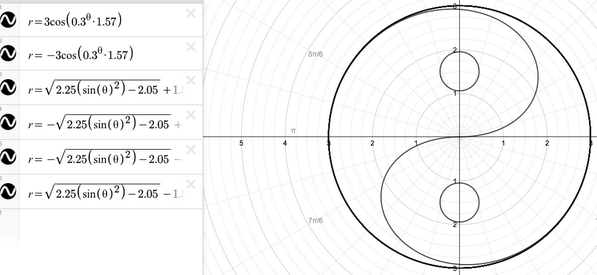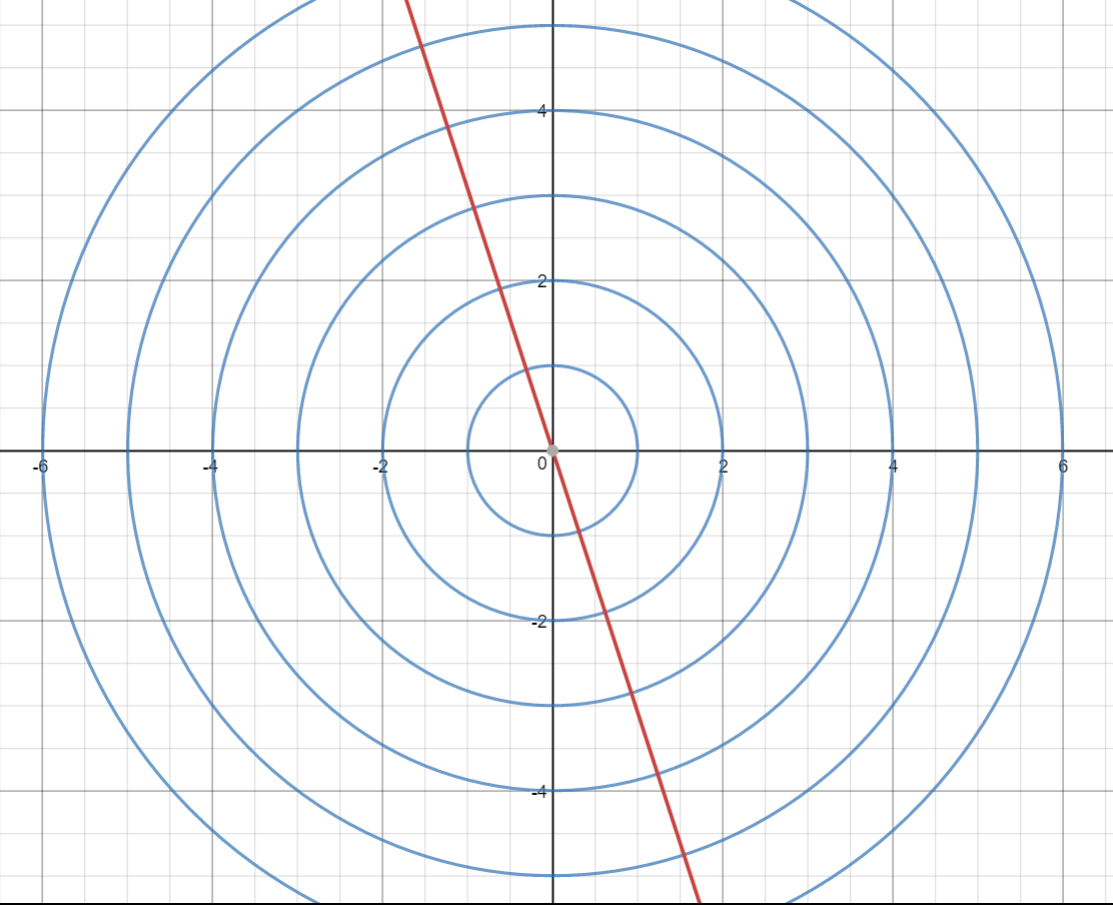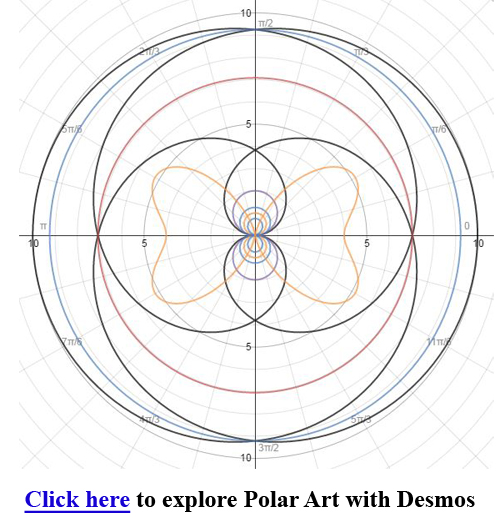

Desmos graphing polar coordinates pdf#
If we graphed, we should get a flower with 57 petals.Download PDF Notes: !As32ynv0LoaIhvQ0qj1PLNzLNFnhIwĭownload These Notes: Link is in Video Description. It turns out that the polar way is solid for most things, but it loses refinement at times. First is the straight up polar way, and the second is the parametric way. So there are two ways to graph polar in desmos. Especially since it only took 10 minutes of classtime!Īs an aside, I love that when I tweeted this out, a tweep said he was going to be doing this in his class after his kids learn about circles. It’s a slightly different way to appreciate the power of math, and I am good for that. I just wanted kids to play, like I played, and get excited, like I got excited. But it is a way to get kids to appreciate the power of polar when they are done working with polar, and what sorts of different kinds of graphs compared to the boring ol’ rectangular coordinate system. Now I want to be frank: there isn’t much “learning” that happens when kids are doing this assignment. I didn’t think too much about math while making my graphs, however I thought about math a lot in order to observe and think about patterns I found in my graphs. I felt that I learned a lot about polar through it. I really enjoyed doing this assignment.Once I finished my multi-equation graph, I looked at the clock on my computer and realized I had been working on it for nearly 20 minutes it had seemed like maybe 5. I had so much more fun doing this than I thought I would, honestly.I spent a lot more time on this than I thought I would, and I feel like I’ll probably spend more time on this trying to find a really cool design I like (and possibly gaining a better understanding why the graphs look the way they do…). Messing around with the graphs was actually more entertaining than I thought it would be.It is so fun when art and math intersect, I loved it!!!!! I think this was so awesome! I love art and this felt like art to me.I also am a bit curious if you had any mathematical thought as you were playing on Desmos? You don’t have to say what thoughts you had (if any) - just if you had any.”Įvery student responded positively. Y’all tend to be honest when I ask for feedback, and I appreciate it! I genuinely want to know. I want to know if you enjoyed doing it or not. I asked my kids, when submitting their artwork, “This is something new I came up with this year. I think when I announce the winners, I’ll have the class go to the board, have everyone point out a few that they like, and then I’ll make my grand pronouncement. I expected everyone to love the same ones I do. And what I’ve found fascinating is that so far, very few kids pick the same polar art pieces as their favorites. Kids from my class, but also kids from other grades. I want to just let them appreciate the work of their classmates for now.Īfter creating the bulletin board, I’ve seen kids look at the artwork. I haven’t yet told my kids who the winners are. So I added an optional third animated polar graph category. However, some students were animating the sliders and coming up with fun animations (like this or this… watch both for a while). And students needed to create the coolest polar art using multiple equations.

Students needed to create the coolest polar graph with one equation. Then I showed kids a google doc which had all the info for the contest - and the link to the google form to submit their entries. Some who were getting boring graphs saw the cool graphs their classmates were getting and were inspired to mix things up since they knew they could make neat things. They gasped and turned their screens to show their friends. They got excited by what they were seeing. They dug into old functions they had learned about. Then I gave everyone 7 minutes to just come up with something pretty. Then I might have altered the function a bit more, like and we saw what happened. So for example, if they said, I might have added the slider.

I then pulled up desmos and asked my kids to shout out some polar function. So after our unit on polar graphing, I took 10 minutes at the start of class to introduce this idea of a Polar. (Now to be fair, desmos isn’t great with creating great complicated polar graphs… and it’s better to write them parametrically to get a bit more accuracy… so this is a bit of a lie of a graph in that it isn’t totally accurate… but it’s oh so pretty.) Why? Because one day during the polar unit, I started playing around with desmos and accidentally created: This was something I wanted to do after introducing polar graphing. Then I printed them out on photopaper and hung them up. These are polar graphs that students designed using Desmos.


 0 kommentar(er)
0 kommentar(er)
